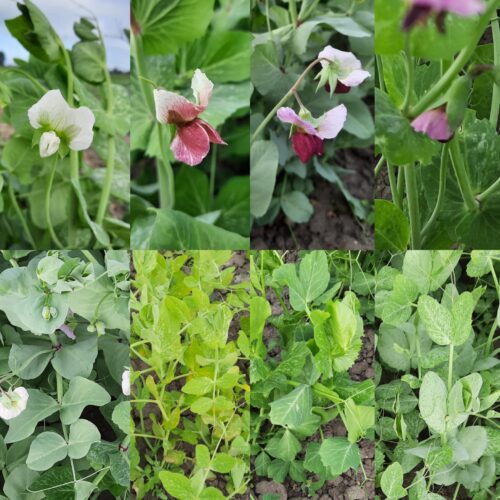Cecilia Hammenhag is a researcher at the Department of Plant Breeding at SLU Alnarp. Her research focuses on developing genomic tools for plant adaptation, studying genetic diversity, and domesticating new crops. All are intended to promote sustainable agriculture, increase food security, and address climate change. Cecilia also has an interesting link to the industry! Would you like to learn more? Read the interview below!
What is currently at the top of your research agenda?
At the moment, I am managing several projects. In collaboration with a colleague in Copenhagen, we are exploring the genetic diversity of peas with a focus on traits related to functional properties. In addition, in another project, we are using several years of field data, and quality data and genotype information to identify genes and DNA markers linked to key breeding traits such as yield, protein content, and seed hardness, which are critical for developing improved pea cultivars. Additionally, I am leading a project that aims to establish a prototype value chain for a novel oil crop, working closely with several industry partners to ensure its practical applications. Alongside these efforts, I am in the process of recruiting a PhD student for a project in collaboration with NordGen (the Nordic seed bank), where we will investigate the genetic regulation and environmental influences on the nutritional quality of peas and faba beans.
Tell us about your latest publication.
In my latest publication, we investigated the genetic diversity of 265 different pea accessions (germplasm samples) to provide tools for improving breeding efforts. The aim was to gain a deeper understanding of the genetic variation present in the pea collection, which is part of the research and breeding project ‘Pea-the key for future green protein‘. This project focuses on utilizing genetic studies to improve the quality of peas and their resilience to climate change, ensuring they can meet future agricultural and protein demands.

In the paper, we used genomic tools to identify differences in the DNA of these pea accessions. Interestingly, we found that traditional landraces (older, locally adapted varieties) and peas from Europe showed the greatest diversity. This is important because this genetic variation can be harnessed to improve traits like pest resistance or adaptability to different climates. Overall, the paper highlights the importance of preserving and utilizing genetic diversity in crops like peas to ensure sustainable and productive agriculture in the future.
What led you to your particular field of research?
My journey into this field has been anything but straightforward. After completing my Master’s in molecular biology at Lund University, I’ve navigated between academia and industry—working in plant oil refining, returning to Lund University for a PhD in molecular genetics, and gaining valuable experience at a breeding company, ultimately leading me to SLU, where I now focus on genetic diversity, crop domestication, and pre-breeding. Moving between academia and industry has shaped my passion for applied research, and I particularly enjoy linking genetics to practical applications in agriculture, helping to improve sustainability, and contributing to future food security and the development of crops that can meet the challenges of a changing climate.
What are the implications of your research for society?
The implications of my research for society are promoting sustainable agriculture, improving food security, and addressing climate challenges. By enhancing protein crops like peas my research contributes to the development of alternative, plant-based protein sources, which can help reduce reliance on environmentally demanding animal proteins. I am also involved in the development of new crops that can serve as both novel food sources and renewable raw materials for the bio-based industry, supporting the shift towards a circular economy. My research supports breeding crops that are more resilient to environmental stresses that can better adapt to climate change. This contributes not only to a more sustainable food supply but also to greater biodiversity in agricultural practices, which is essential for long-term ecological and food security. Overall, my research strives to improve a resilient and sustainable agricultural future, benefiting both food production and industrial applications.
Finally, let´s say you have unlimited research funds; where would your research be five years from now?
While unlimited funds would certainly accelerate progress, plant breeding remains inherently constrained by the natural growth cycles of crops—five years still means only five growing seasons, which limits how quickly we can proceed. However, with infinite resources, I would hire a dedicated team of plant breeders and genomics experts to fast-track the domestication of new crops tailored specifically to Sweden’s needs. This would include crops designed for food production, bio-based industries, and animal feed. Additionally, I would invest heavily in advanced trait discovery technologies and expand collaborations to speed up the identification and integration of beneficial traits. By focusing on developing resilient, high-yield crops suited to both changing climate conditions and the specific demands of local industries, we could make significant strides towards a more sustainable and self-sufficient agricultural system in Sweden.

Thank you for a very interesting interview, Cecilia! We wish you the best of luck and success in your future path!
(Main photo: Timmy Larsson)

